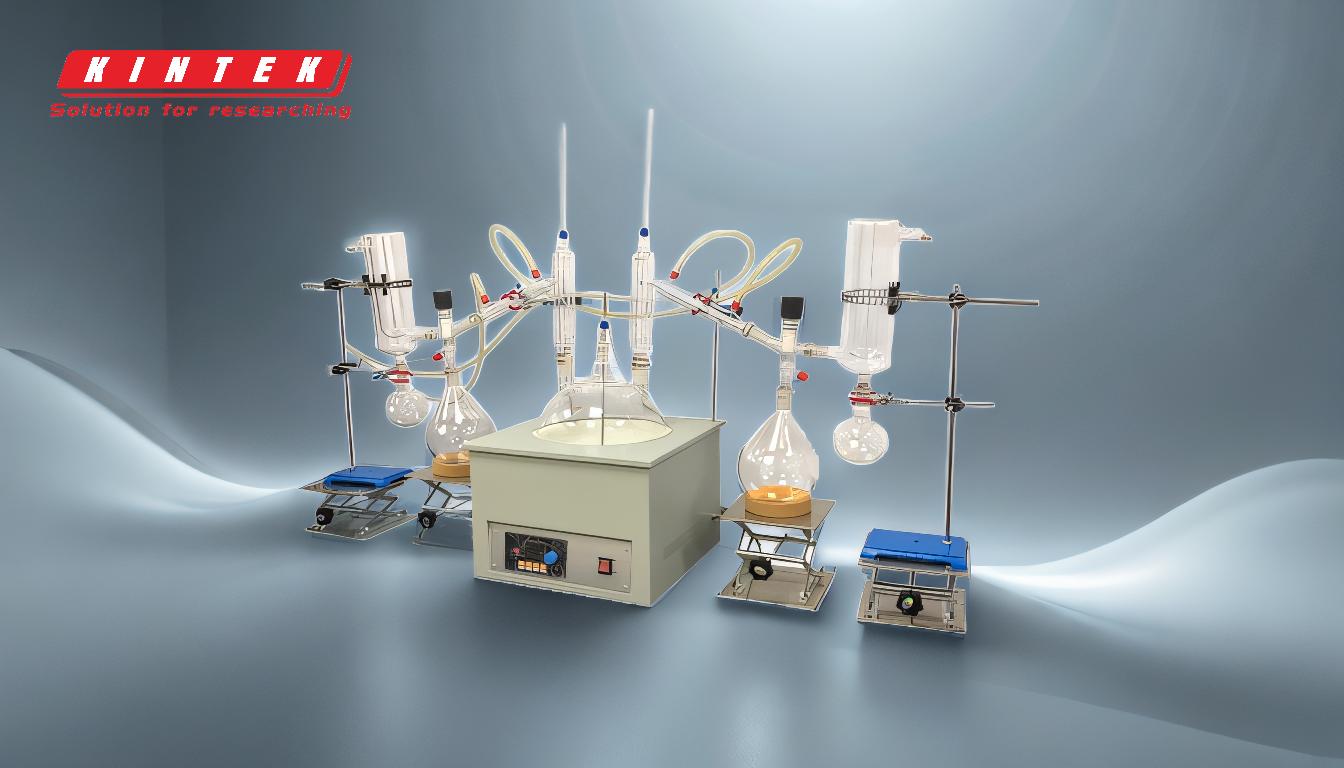Vacuum distillation is a critical process used in various industries to separate and purify compounds with high boiling points or those that decompose at elevated temperatures. By lowering the pressure within the system, the boiling points of the compounds are reduced, enabling distillation at lower temperatures. This prevents thermal degradation, improves efficiency, and ensures the production of high-purity samples. It is widely used in industries such as petroleum refining, chemical manufacturing, and desalination, where maintaining the integrity of heat-sensitive compounds is essential. The technique is also versatile, often combined with other distillation methods like steam or fractional distillation for enhanced separation.
Key Points Explained:

-
Reduction of Boiling Points:
- Vacuum distillation lowers the pressure within the system, which directly reduces the boiling points of the compounds being distilled. This is particularly useful for compounds with high boiling points (above 392°F or 200°C) that would otherwise require extremely high temperatures to vaporize.
- By operating at reduced pressures, the process allows these compounds to boil at much lower temperatures, minimizing the risk of thermal degradation.
-
Prevention of Thermal Degradation:
- Many organic compounds, especially those used in pharmaceuticals, fine chemicals, and petroleum refining, are sensitive to high temperatures. Heating them to their normal boiling points can cause decomposition, polymerization, or other undesirable chemical reactions.
- Vacuum distillation ensures that these compounds are distilled at temperatures low enough to preserve their chemical integrity, resulting in higher purity and yield.
-
Efficiency and Energy Savings:
- Distilling at lower temperatures reduces the energy required for heating, making the process more energy-efficient. This is particularly beneficial in large-scale industrial applications, where energy costs can be significant.
- The process also improves the overall efficiency of separation, as it allows for the distillation of compounds that would otherwise be difficult or impossible to separate under atmospheric pressure.
-
Versatility in Applications:
- Petroleum Refining: In the petroleum industry, vacuum distillation is used to further process residual oil from atmospheric distillation. Crude oil cannot be heated above 370–380°C due to the risk of thermal cracking and coke formation. Vacuum distillation allows the separation of high molecular weight hydrocarbons at lower temperatures, typically at pressures as low as 10–40 mmHg.
- Desalination: Vacuum distillation is employed in desalination plants to remove salt from seawater, producing fresh water efficiently.
- Chemical and Pharmaceutical Industries: The technique is used to purify heat-sensitive compounds, such as aromatic compounds, essential oils, and active pharmaceutical ingredients (APIs), ensuring high-purity products.
-
Combination with Other Techniques:
- Vacuum distillation is often combined with other distillation methods, such as steam distillation or fractional distillation, to enhance separation efficiency. For example, in the separation of aromatic compounds, vacuum distillation can be used alongside fractional distillation to achieve better results.
- The ability to conduct distillation without heating (in some cases) further expands its applicability, especially for compounds that are highly sensitive to temperature.
-
Industrial and Laboratory Use:
- In industrial settings, vacuum distillation is a key process for refining and purifying large quantities of materials, such as crude oil and chemical intermediates.
- In laboratories, it is used for small-scale purification of compounds, particularly in research and development where high-purity samples are required for analysis or further synthesis.
-
Environmental and Safety Benefits:
- By operating at lower temperatures, vacuum distillation reduces the risk of hazardous reactions, such as thermal decomposition or explosions, enhancing safety in industrial and laboratory environments.
- The process also minimizes the release of volatile organic compounds (VOCs) into the atmosphere, contributing to environmental protection.
In summary, vacuum distillation is an indispensable technique for separating and purifying compounds with high boiling points or those that are sensitive to heat. Its ability to operate at lower temperatures, combined with its versatility and efficiency, makes it a preferred method in industries ranging from petroleum refining to pharmaceuticals and desalination.
Summary Table:
| Key Aspect | Description |
|---|---|
| Reduction of Boiling Points | Lowers pressure to reduce boiling points, enabling distillation at lower temps. |
| Prevents Thermal Degradation | Protects heat-sensitive compounds from decomposition or unwanted reactions. |
| Energy Efficiency | Reduces energy consumption by operating at lower temperatures. |
| Versatile Applications | Used in petroleum refining, desalination, and pharmaceutical industries. |
| Combination with Other Methods | Often paired with steam or fractional distillation for better separation. |
| Environmental Benefits | Minimizes VOC emissions and enhances safety by reducing hazardous reactions. |
Discover how vacuum distillation can optimize your processes—contact us today for expert guidance!












